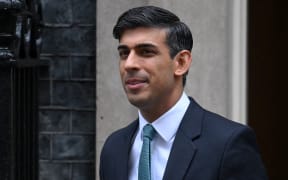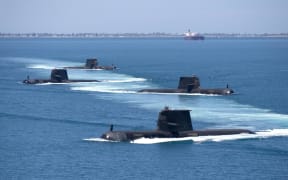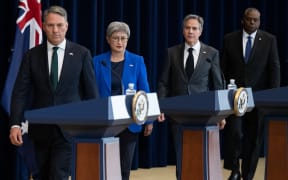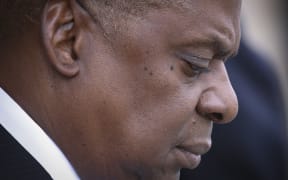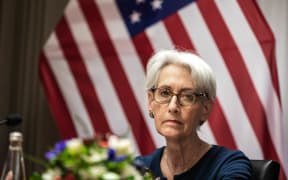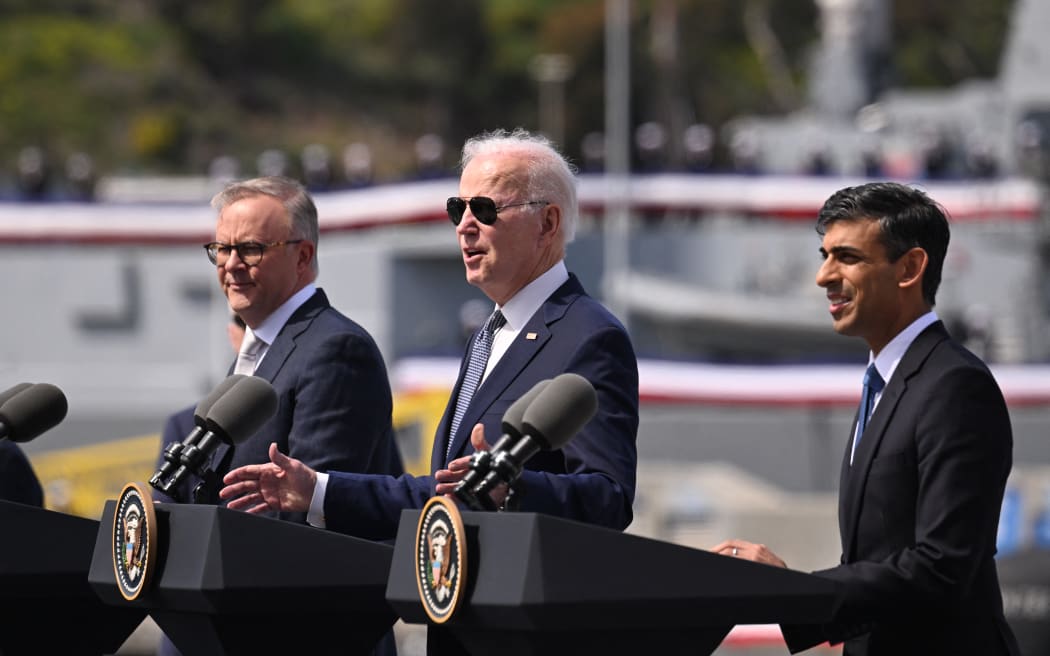
US President Joe Biden (centre) speaks alongside British Prime Minister Rishi Sunak (right) and Australian Prime Minister Anthony Albanese (left) at a press conference during the AUKUS summit on 13 March, 2023 (US time), at Naval Base Point Loma in San Diego California. Photo: AFP / Jim Watson
Australia has confirmed it will buy at least three American-manufactured nuclear submarines and contribute "significant additional resources" to US shipyards.
The Australian government will take three, potentially second-hand Virginia-class submarines early next decade, pending the approval of the US Congress.
The nuclear submarine programme will cost up to A$368 billion (NZ$394.5b) over the next three decades.
There will also be an option to purchase another two under the landmark AUKUS defence and security pact, announced in San Diego on Tuesday morning.
In the meantime, design and development work will continue on a brand new submarine, known as the SSN-AUKUS, "leveraging" work the British have already been doing to replace their Astute-class submarines.
That submarine - which will form the AUKUS class - would eventually be operated by both the UK and Australia, using American combat systems.
One submarine will be built every two years from the early 2040s through to the late 2050s, with five SSN-AUKUS boats delivered to the Royal Australian Navy by the middle of the 2050s.
Eventually, the fleet would include eight Australian submarines built in Adelaide into the 2060s, but the federal government is leaving open the option of taking some from British shipyards if strategic circumstances change.
Meanwhile, the federal government estimates the cost of the submarine programme will be between A$268b and A$368b over the next 30 years.
As part of that figure, A$8b will be spent on upgrading the naval base HMAS Stirling in Western Australia.
From as early as 2027, four US and one UK submarine will start rotating through Western Australia, to be known as the Submarine Rotational Forces West.
No decision has been made on a future east coast base for submarines, although Port Kembla has firmed as the most likely location.
Standing alongside Prime Minister Anthony Albanese and UK Prime Minister Rishi Sunak, US President Joe Biden spoke of the strength of the alliance already.
"Today, as we stand at the inflection point in history, where the hard work of announcing deterrence and enhancing stability is going to reflect peace and stability for decades to come, the United States can ask for no better partners in the Indo-Pacific where so much of our shared future will be written," Biden said.
US subs to rotate off Australian coast
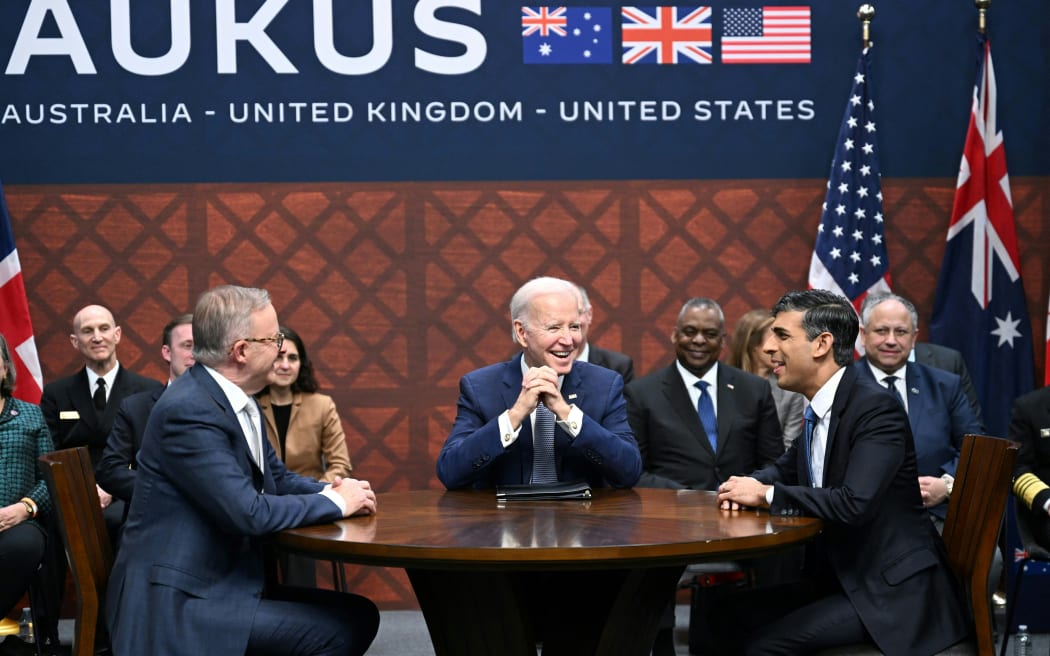
Photo: AFP / Jim Watson
During the announcement, Biden flagged that, from this year, Australian navy personnel would embed with US and UK crew on submarines and at their shipyards.
"In fact, as we speak, the nuclear-powered sub, is making a port call in Perth and later this year, there will be a rotational presence of nuclear-powered subs to Australia to help develop the workforce it will need to build," he said.
"AUKUS has one overriding objective: to enhance the stability of the Indo-Pacific amid rapidly shifting global dynamics."
Albanese confirmed Australian submariners were already undergoing nuclear power training in the US.
"I am proud to confirm that they are all in the top 30 percent of their class," he said.
"This will be an Australian sovereign capability, commanded by the Royal Australian Navy and sustained by Australians in Australian shipyards, with construction to begin within this decade."
Albanese reiterated that Australia purchasing nuclear submarines would not breach non-proliferation treaties ratified by the country.
Sunak described the alliance as a "powerful partnership" that would see "truly interoperable" submarines.
"The Royal Navy will operate the same submarines as the Australian Navy and we'll both share components and parts with the US Navy," he said.
"Our submarine crews will train together, patrol together and maintain their boats together.
"They will communicate using the same terminology, and the same equipment."
Money for US shipyards
Australia will also contribute A$3b over the next four years to US and UK production lines, with the bulk of that money heading stateside.
White House officials insisted Australia was preparing to make a "substantial contribution" to US submarine production facilities.
The US government will also request an extra US$4.6b from Congress to upgrade the nation's submarine infrastructure, with a concession that the readiness of American production lines are "not where it should be".
"More will be needed, and the Australians will also contribute there, so this is a generational opportunity," a senior official said.
Included in its overall project budget, Australia will spend A$2b over the next four years upgrading the Osborne shipyards in South Australia.
The purchase of Virginia-class submarines from the United States was described by American officials as "a potent nuclear-powered submarine force in the 2030s, much earlier than many had expected".
US officials tried to allay concerns about restrictions on sharing its nuclear technology with Australia.
"Australia is one of our very closest allies. They have stood next to us in no shortage of events and we feel very confident that they will take this this unique capability in a responsible fashion," one official said.
The three AUKUS leaders made the announcement at Naval Base Point Loma, in front of the Virginia-class submarine USS Missouri, which arrived in San Diego Harbour late last week.
- ABC
